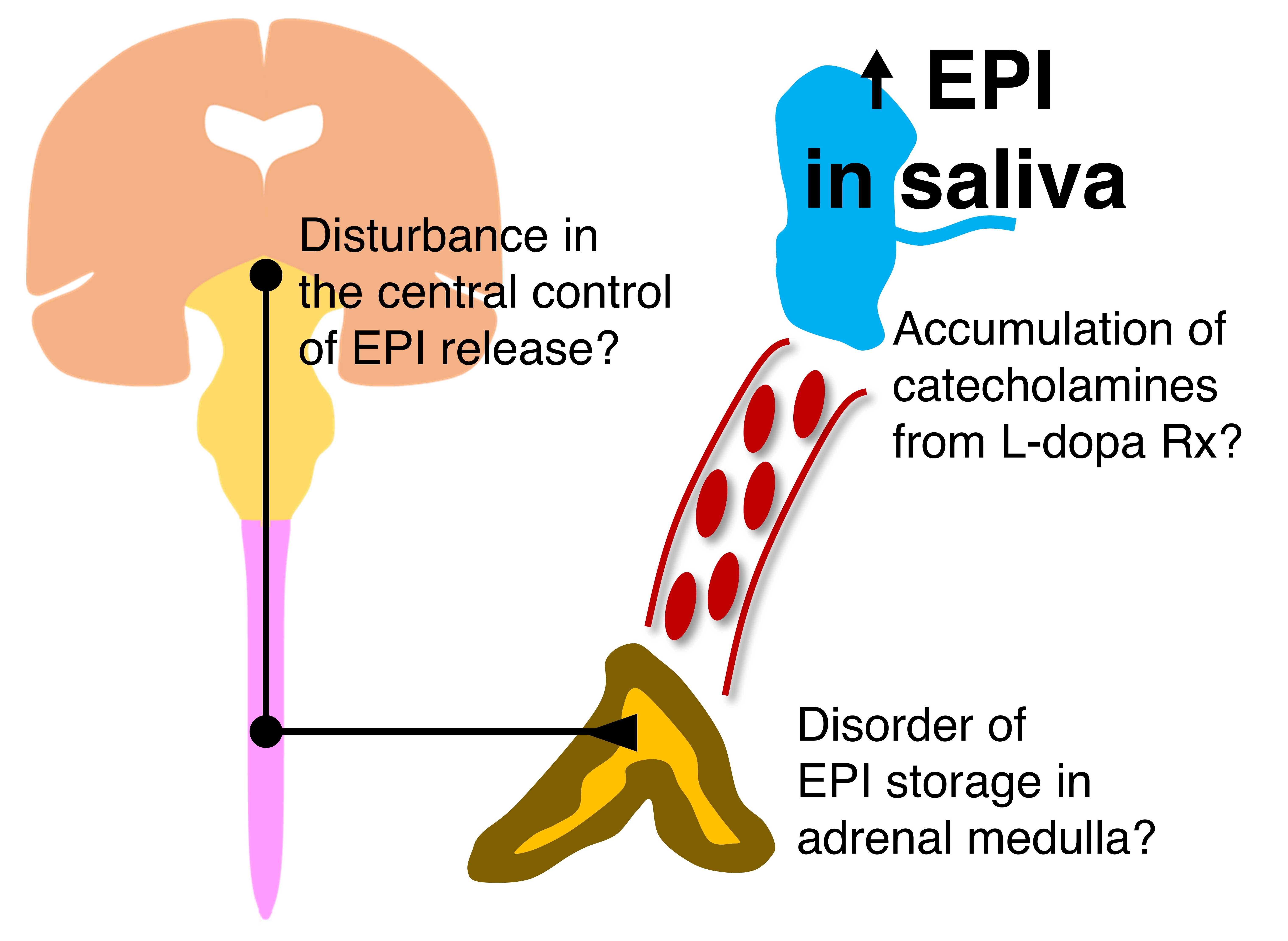Category: Parkinson's Disease: Pathophysiology
Objective: To investigate the levels of dopamine (DA), norepinephrine (NE), epinephrine (EPI) and serotonin (5-HT) in the saliva of Parkinson’s disease (PD) patients and compare these levels with the control group.
Background: The levels of catecholamines (DA, NE and EPI) and monoamine neurotransmitter (5-HT) in the saliva of PD patients have not been extensively studied. Neither their pathophysiologic role on salivary abnormalities associated with PD, nor their potential role as PD biomarkers, have been explored.
Method: We collected 2 mL of saliva from Parkinson’s disease patients, aged between 30-70 years, in our center (n=21). Administration of PD medications was discontinued 12 hours prior to the collection. Before specimens were taken, participants washed their mouths with water alone. No other exogenous stimulation was permitted. DA, NE, EPI and 5-HT levels were determined using high-performance liquid chromatography (HPLC) with electrochemical detector (ECD). Saliva specimens were also obtained from a control group, made up of, age-matched healthy volunteers and subsequently analysed in the same way.
Results: Samples from 11 PD patients (PD group) and 16 healthy volunteers (control group) were suitable for HPLC with ECD. No significant difference was found between the PD and control groups for, salivary DA concentration (814.74±301.54 vs 649.75±347.94 ng/L, respectively, p=0.122) and NE concentration (3,164.69±2,095.12 vs 1,183.81±691.81 ng/L, respectively, p=0.122). However, salivary EPI concentration was significantly higher in the PD group compared to control (2,745.63±1,195.36 vs 550.77±194.90 ng/L, respectively, p=0.035). Levels of 5-HT were undetectable in any specimen using this technique.
Conclusion: In our study, salivary catecholamine levels can be measured using HPLC with ECD. PD patients had significantly higher salivary EPI concentration than healthy subjects. This might be due to a disturbance in the central control of EPI release, a disorder of EPI storage in adrenal medulla, or an accumulation of catecholamines from levodopa therapy. Future studies are required to see if this observation is mirrored in larger cohorts and to determine if the increase in this sympathetic neurotransmitter, underlies salivary underproduction in PD patients. We also plan to improve our protocol to increase the success rate for detection of catecholamines and 5-HT.
References: 1. Kennedy B, Dillon E, Mills PJ, Ziegler MG. Catecholamines in human saliva. Life Sci. 2001 May 25;69(1):87-99. 2. Schwab KO, Heubel G, Bartels H. Free epinephrine, norepinephrine and dopamine in saliva and plasma of healthy adults. Eur J Clin Chem Clin Biochem. 1992 Sep;30(9):541-4. 3. Stoica E, Enulescu O. Abnormal epinephrine urinary excretion in Parkinsonians: correction of the disorder by levodopa administration. J Neurol Sci. 1978 Sep;38(2):215-27.
To cite this abstract in AMA style:
P. Wichit, S. Thanprasertsuk, T. Hopetrungraung, O. Phokaewvarangkul, S. Bongsebandhu-phubhakdi, R. Bhidayasiri. Increased epinephrine in the saliva of Parkinson’s disease patients: A preliminary observation [abstract]. Mov Disord. 2020; 35 (suppl 1). https://www.mdsabstracts.org/abstract/increased-epinephrine-in-the-saliva-of-parkinsons-disease-patients-a-preliminary-observation/. Accessed December 26, 2025.« Back to MDS Virtual Congress 2020
MDS Abstracts - https://www.mdsabstracts.org/abstract/increased-epinephrine-in-the-saliva-of-parkinsons-disease-patients-a-preliminary-observation/


